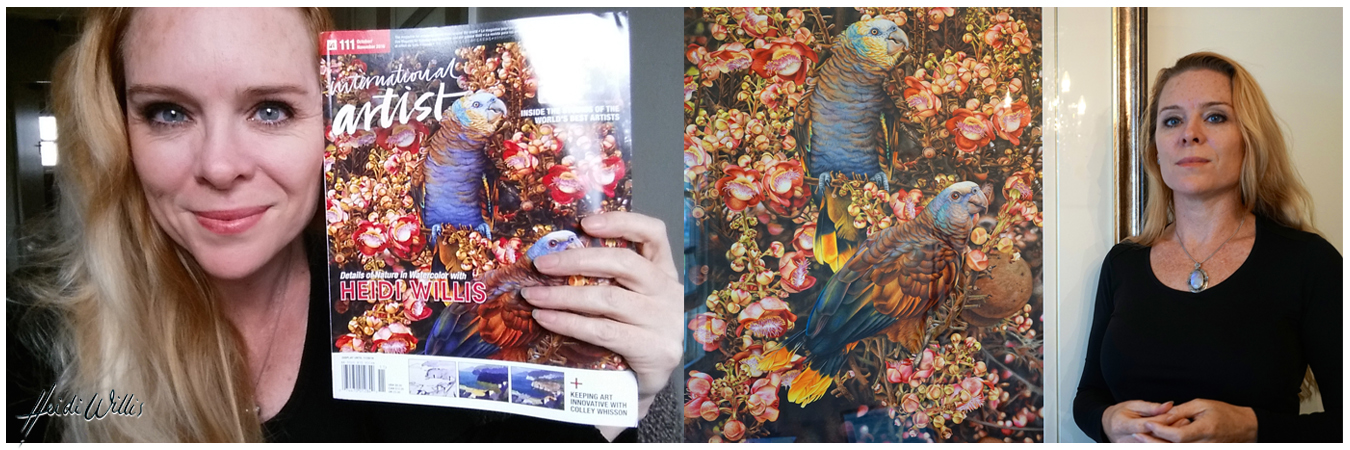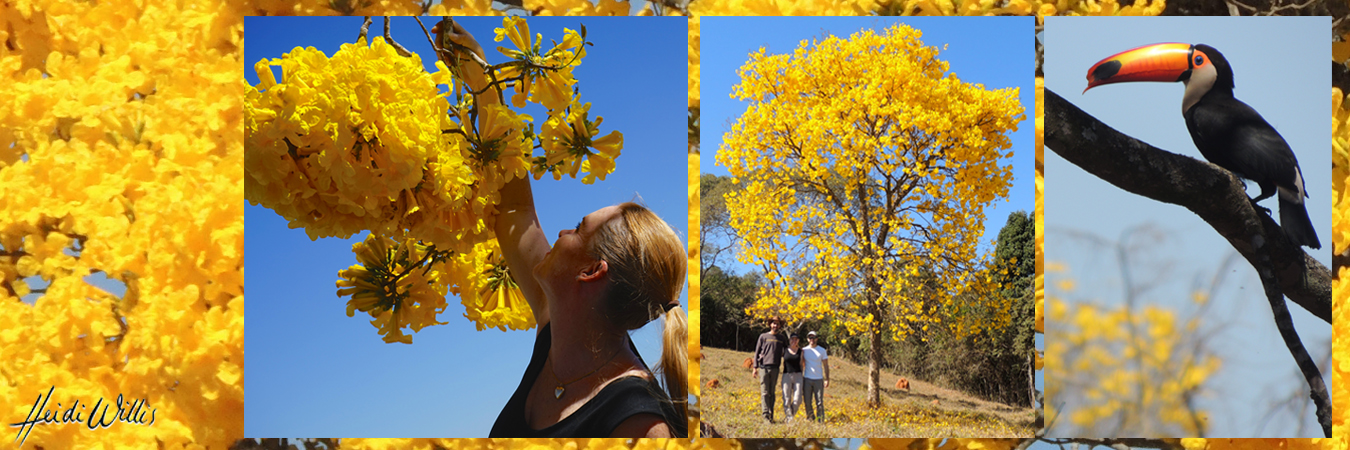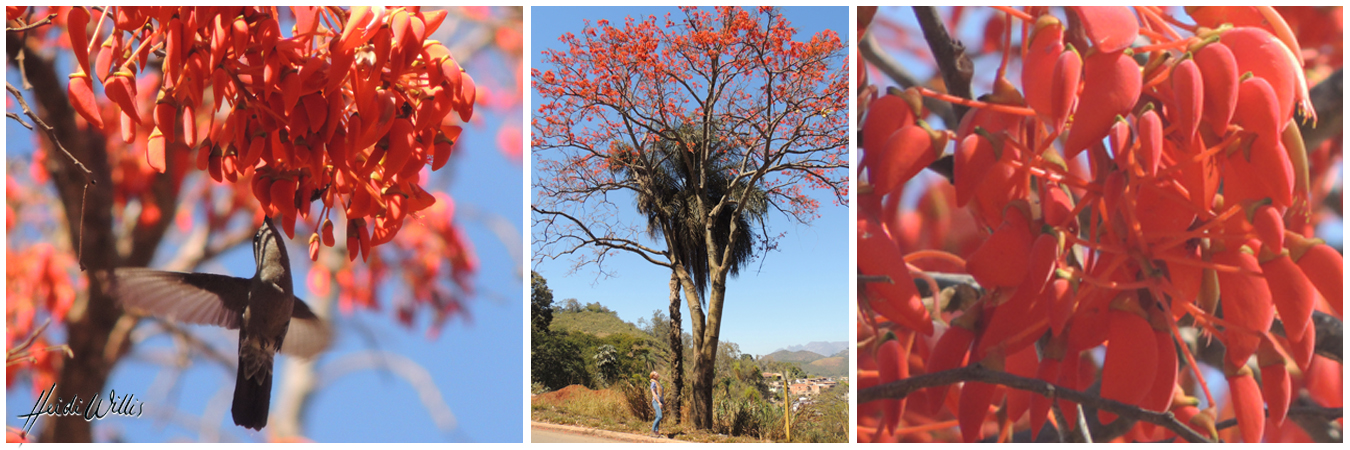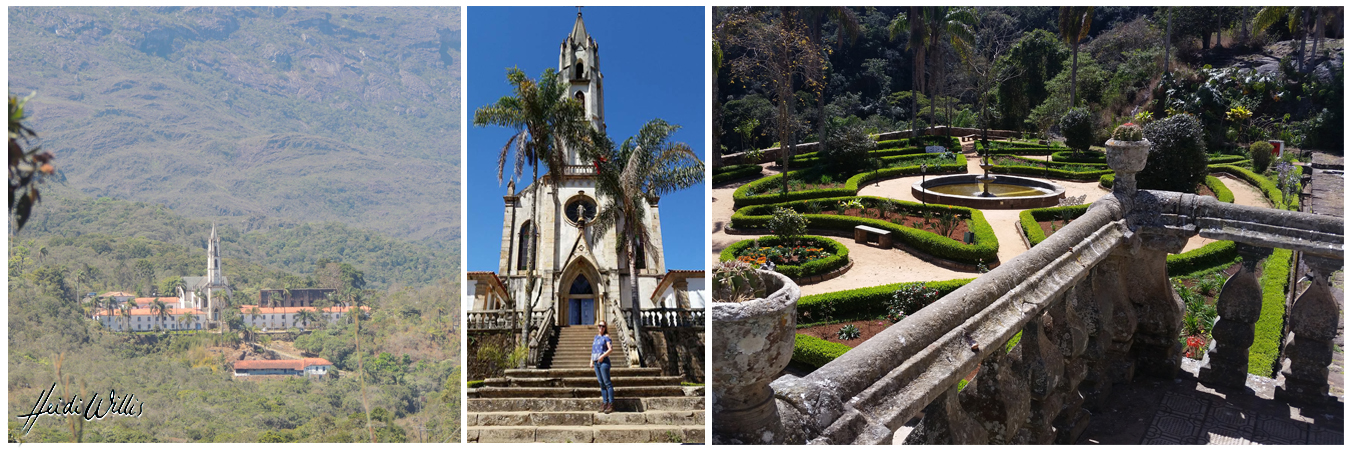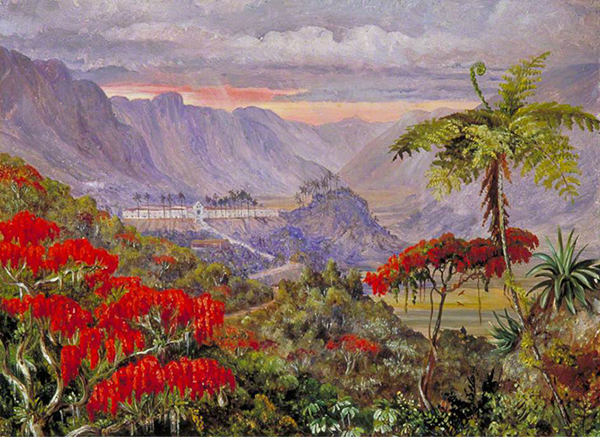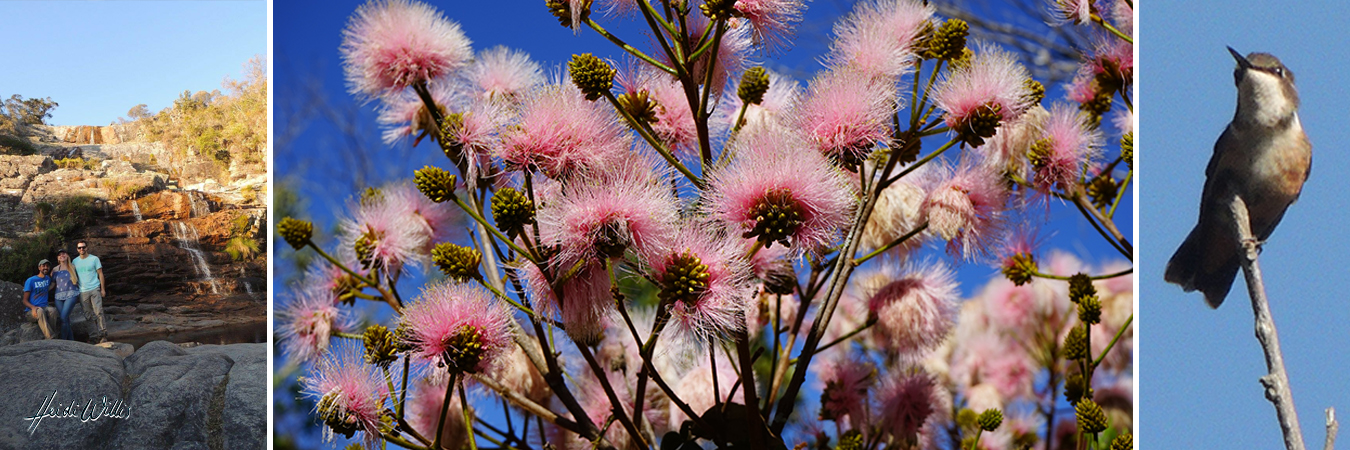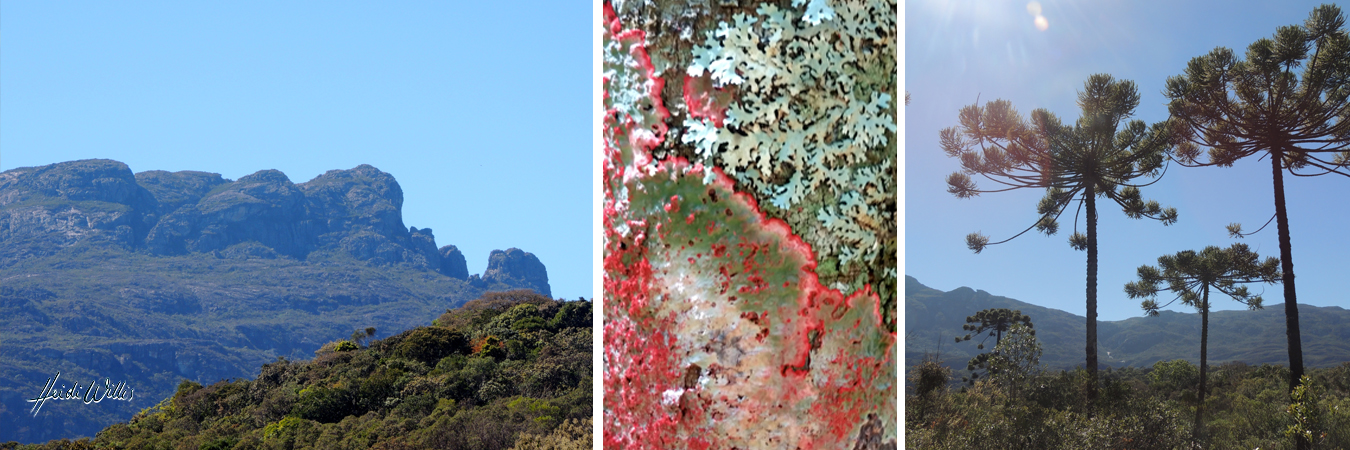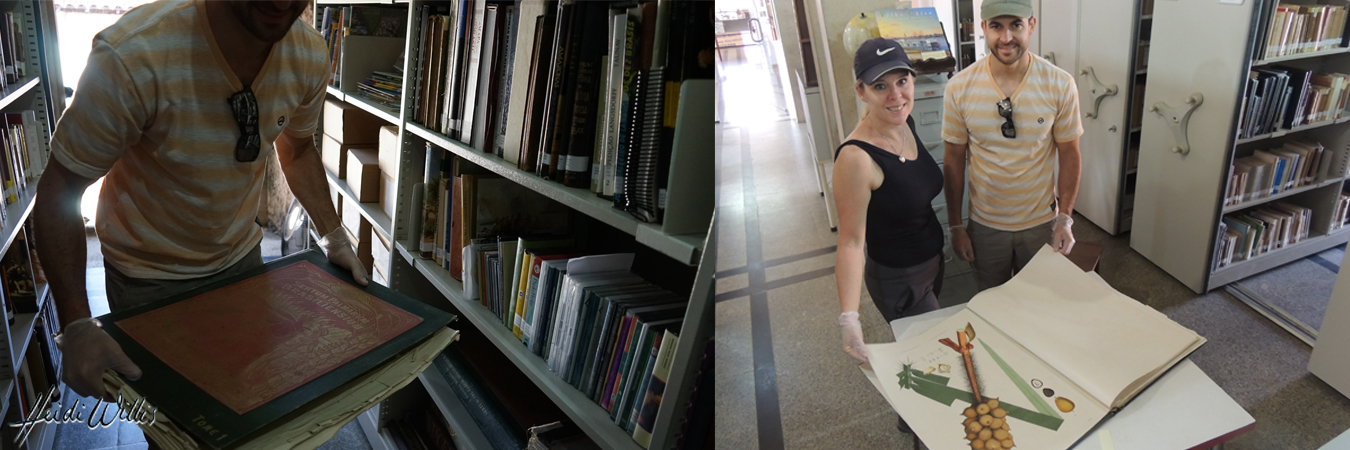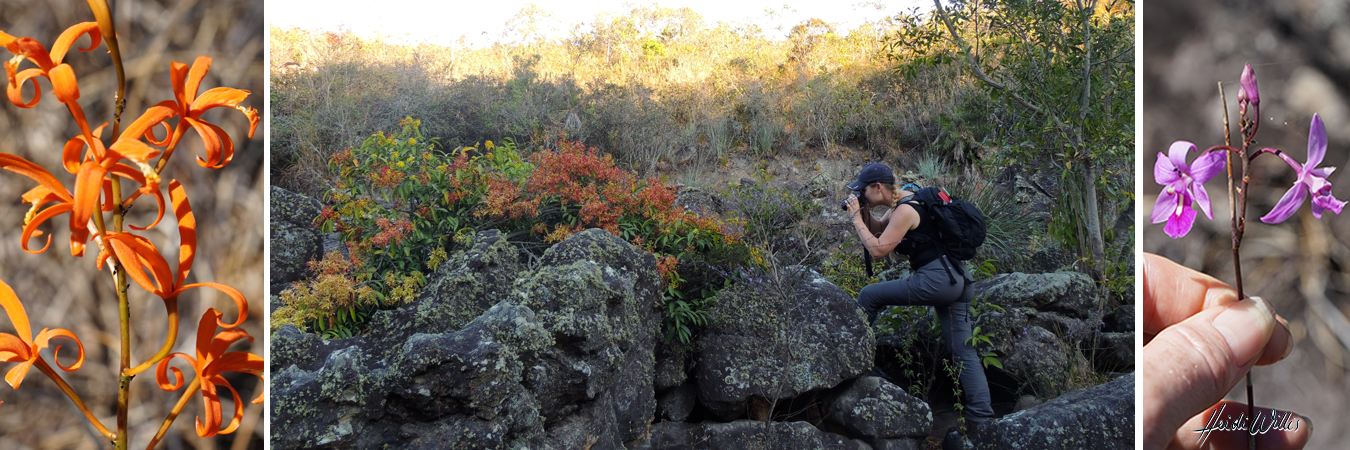Nature hunting – My week at Caraça, Brazil
Although I have been here in Brazil for just a few days, mine has already been a truly wonderous and memorable experience already. My hosts, Lucas and Kelen are friends of mine from Brazil, followers of my work, a biology professor, a forestry engineer and Kelen, also a botanical artist, told me id ‘be well loved and protected here in their country’, and I certainly have been. After 3 flights to get here, I was so happy to see their shining happy faces greeting me at the arrival gate. Warm embraces felt instantly familiar and with that, our joyful and spirited journey of common loves began.
South America has been in my heart and mind for as long as I can recall. As a child I dreamed of seeing the Amazon for the sheer wonder and awe it inspired in my mind. As an adult my interest never changed, and now as a natural history artist it simply seems essential to me to explore some of these subjects for my work.
In recent years my life has been filled with such remarkable synchronicity that I have learned more and more to not only trust in myself, but to trust the natural timing of things evolving in their own way. This trip has been one of those events where everything Ive waited so patiently and worked so hard for has simply fallen into place like it was meant to be, forming this landmark in my life and hopefully in more of my work too.
My focus on painting the natural history of South America has really become a powerful instinct and desire for me these last couple of years, the urge prompting me to create my first major work on South America St Vincents Amazons and Cannonball Tree as a result. As many of you already know, St Vincents Amazons and Cannonball Tree went on to be a finalist and prize winner in the prestigious Waterhouse Natural Science Exhibition in the South Australian Museum, followed by a national tour, its appearance on the front cover of International Artist Magazine, and ultimately into a private collection in the United States of America. It is and may always be, my favourite painting of all, but I am working on topping it!
The fabulous journey of my St Vincents Amazons and Cannonball Tree painting only led me further into this deep yearning to paint more from South America’s spectacular offerings, only now I am here in person in search of just the right reference to continue this body of major works.
One recent Tuesday morning I awoke and I lay in my bed, the hatchlings of new paintings flicking through my mind just thinking of traveling here. ‘I must go, i know i must go, and how will I go…?’ I thought to myself quietly as my phone buzzed in the low light of the morning. It was Kelen with a message that read along these lines, ‘Heidi, I have seen a beautiful tree. I looked at this tree and thought Heidi Willis needs to paint this… You must come here to Brazil and see it’ the message read under a photo of yet another utterly divine tree amassed with flowers too beautiful to dream of. And so I simply said ‘ok then…! Im coming’. An hour or so later I had my ticket in my hand and just a handful of weeks later I am here in Brazil chasing my dreams and beautiful things with people I adore – and thats how this trip happened, simply by saying yes!
The drive from Belo Horizonte is slowed by the conditions, terrain and a constant string of trucks choking up the road ahead of us. The delicate pink, powder dry earth stretches as far as one can see, billowing along the roadside into our path, powder dry without any sight of rain in our midst. Roadworks further the congestion for great lengths at a time as the road continues to wind up through the ranges closer to our destination, Caraça.
Despite the monotony, the parched hillsides remain quite beautiful with their soothing earth tones so peachy and soft, fields studded with thousands of termite mounds shifting colour with the soil they rise from, and the stunning flooding yellow of the Tabebuia trees speckled across the landscape far and wide that continue to enthral us. Between us we are biologists, forest engineers and botanical artists… so this alone is more than enough to satisfy us deeply! Gasping at every spectacular glimpse of golden yellow as if it were a new thrill, the otherwise dreary journey fades away soon enough.
Sunburn, tick infestations, fence hopping, bee dodging, dust and rugged roads… our Tabebuia Hunt knows no limits!
With yet another taxing speed bump behind us we reach the crest of a hill, situated just on the edge of a small town. Here we see a new view, one that is flooded with the cascading flaming scarlet reds of the Brazilian Coral Tree, or Erythrina verna… I am overjoyed as this is one tree on the top of my hit list on my visit here to Brazil, and my flock folk companions share my enthusiasm more than equally. This makes it even more wonderful of course!
We pull off the road abruptly, quickly abandoning our car cameras in hand and start to explore the flourishing red trees thoroughly and eagerly. We watch as parrots and hummingbirds dart in and out of the flowers, pillaging every blossom for its offerings with delightful banter, tweeting, squawking and twittering away contentedly as they go about their business. For some time we just watch and enjoy the activity, a feast for the eyes, senses and of course, my painting imagination.
Moving on we soon arrive at the gates of Caraça, pass through the check point and begin to make our way up the isolated road that leads into a remarkable old monastery nestled majestically into the remote valley surrounded by baron, imposing and beautiful hillsides in all directions. The church steeple rises high above the worn white monastery buildings, rustic, strange and yet somehow so alluring amongst this wilderness. Tall palm trees mark the outskirts of the properties grounds, and an unlikely yet neatly kept formal garden including a grand stone staircase and courtyard carpeted in lichens and bromeliads leading to the chapel, completes Caraça’s incongruous yet captivating existence.
I was not aware until arriving here, but Lucas told me that this is the place where Marianne North had once painted the very same view back in the 1870’s, long before the towering church steeple was added to the landscape. I stand here in the grounds of this magical place, looking out over the view that she had painted here so long ago, that now seems so accidentally reminiscent of my own impressions and path here to this location. Its quite a remarkable feeling, just to be here and to take it all in as I am.
Marianne North’s painting of View of Caraca, Minas Gerais, Brazil, held at the Royal Botanic Gardens, Kew
After stopping for some time to photograph the spectacular pink Inga trees, feeling our heartbeats pounding in our chests with the utter beauty of this plant, we follow the sandy trail away from the grounds towards the waterfall, taking many long pauses along the way to chase hummingbirds and all manner of things. Amongst our constant and complete distractions, Lucas’ enthusiasm echoes out through the wide open silent air, camera at the ready, ‘please, pleasssse, pleassssssse i beggggg of youuuu, please sit for me little hummingbird’ as usual, and occasionally they do, just for a moment.
The trail ends at the falls, streaming gently down the hillside layer by layer forming clear tannin stained waterholes along the way, filled with the largest tadpoles Ive ever seen and tiny hummingbirds dart around over our heads with that familiar flurry of sound. With our feet in the freezing water we gasp at the cold as the tadpoles nibble gently at our feet, which we can no longer feel from the cold, as Lucas dives in completely crying out with a mixture of the dagger sharp pain of the cold water around him and the glee of this place as he goes. He cant back out now, having told us all the way that feeling cold is just psychological… he howls at the cold as we remind him ‘its all just psychological’ and continue plucking ticks from our ankles and scratching at the many bites on our legs from previous days adventuring the irresistible Tabebuias of the grasslands.
Drying out in the fading sunlight we speak of all things, regularly interrupted by the coming and going of kingfishers and all manner of things. As the evening air begins to chill, we strap on our boots and return home to a hearty hot meal of rice and beans in the enormous rustic dining hall. We sit on just three of the 200 or so chairs set around endlessly long tables that fill the room and we eat beans with rice, as a change from rice with beans… The other 197 remain empty, but perhaps for the ghosts of the catacombs below our rooms.
Morning begins early and we make our way down the broad open hallways with high ceilings and 12″ wide timber floorboards to the breakfast room. A welcoming wood fire oven crackles away with a bowl of pancake batter placed beside the hotplates ready for the making. Hot coffee, bowls of tiny biscuits, fresh fruits, bread and eggs are just the remedy to start the day, and we pull our chairs out over rustic tiles and sit below the heavy timber beams of the room. Its a simple, comforting and homie space to be.
Setting out on the path we hit the dusty trails leading over the river and follow it into the bone dry windswept tundra, home of every soft earthy colour you can create. Veering right we pass the beautiful Araucária grove where a fantastic view of the resting body and face hidden in the hillsides is visible. Back at the edge of the trees again, the cooler air and shade brings a welcome relief from the heat of the open spaces.
Here spindly tree trunks are sheathed in spectacular lichens, textural, sage green and rich reds unlike any Ive seen before, bromeliad‘s scattered throughout the forest. Titi monkeys hoot and leap gently through the canopy as we pass by their watchful eyes and on to the creek where beautiful fresh water sweeps over the falls and gently into pools below us. Its a beautiful place to pause.
Passing the lake on our way home, we stop for water and lunch, rice with two kinds of beans and some undefined meat, and take to the trails again… up this time, briefly through the light forest at the base and into the incline of the hillside. Organic bush track shift into sandstone ridges, finding our footing on the uneven ground with each step.
Passing the little white chapel perched mid way up, we start the second leg of the walk to the top of the ridge. Now the landscape falls away from us and we can see the valley far and wide, punctuated only by the imposing monastery nestled below. The air is silent with the exception of our own breath, the distinctive murmur of the hummingbirds darting from bush to bush, and the roaring sound of the swallows cutting through the air at tremendous pace in flocks… an exhilarating sound that makes you instinctively duck for cover as the pass by.
The views are striking and powerful, the silence and sense of freedom you feel here makes your heart mind think grand thoughts, and with new renewing clarity. Each of us, immersed in this space in our own ways quietly begin to explore the ridge, hopping from lichen covered stone to stone looking down over the world below, and up at what still remains above us. Settling in to our hummingbird posts with cameras at the ready, the hard core dedication begins with Lucas enthusiastically leading the way. The afternoon slips by happily, solitary, yet together… its all pretty wonderous!
Evening fades and we depart with just enough light to lead us back home. ‘What do you think we will have for dinner?’ I ask Kelen… ‘hmmm, i think beans, some rice, and maybe some monster meat’ he replies gently with a smile knowing the predictability of dinner, mixed with our burning desire to eat it regardless.
Darkness falls and we wait quietly in the church courtyard for the greatly anticipated arrival of the rare Maned Wolf. Although I strongly disagree with the practice of feeding wild animals like this, I must say that I had completely and utterly underestimated the magic and thrill the experience of seeing this remarkable animal silently emerge beside us and walk by just a couple of meters away from our reach. I was so awestruck I spontaneously clutched at Kelen’s arm barely able to speak, infatuated, mystified and certainly blessed to be there for this moment.
The orchid cave is found with local knowledge only, and we set out for our destination soon after breakfast, taking to trails now familiar. At the crossroads we take the unfamiliar trail this time and start to beat our way along the unsteady path that is most definitely less traveled, tall grass towering over our bodies, slashing at any areas of exposed skin as we hike through the thickets. Steeply uphill we battle the tangled ways of the woods giggling, tripping into foot width, deeply dug anteater holes along the path, many hidden from view under dense leaf litter from the forest and then the ticks, so many ticks…
Despite the challenge, we make many deviations from the ‘path’ to explore beautiful passionfruit flowers dangling from the canopy, dramatic clutches of bromeliads clutching to tree boughs catching the light and to chase birds darting in and out of the foliage to see it all thoroughly as we push through. ‘To make the cake, you must first break the eggs!’ Lucas declares boldly with steely determination, steadily plucking the ticks off his legs with arms covered in scratches.
Down the other side of the ridge we return to the heat of the open valley and edge our way along huge sandstone shelves, adorned with the rust colours of a terribly parched landscape, still so beautiful in the harshness. Orchids cling to stone and wood struggling in the conditions with every determined to survive. Brilliant orange, vivid pinks and mauve, buttery ivory colours speckling the ledges and vegetation like treasure.
We descend to the almost dry creek bed on our bottoms and duck down low to enter the cave, sweeping stone walls allowing shards of light to creep in to the hidden world below before contemplating the return trip home over the steep tick infested ridge, back to a lunch of beans… quite possibly served with rice, so yummy!
Its a fair trek back, but the afternoon returns us to the top of the mountain ridge again for one more visit. We sit in peace and watch the light fade with comfort and stillness in our spirits, the close of another wonderful day.
A golden amber watering hole… With breakfast in our bellies and my water supplies replenished we take to the wilderness again with pockets full of cookies this time, and head far further afield to the ranges behind the monastery, a 10km return trail heading directly to a mysterious valley between two enticing peaks in the hills. The walk is fairly long and hot in the open grasslands but beautiful as always with a gentle breeze easing the heat on our bodies. My left side singes as we cut across the plains to the far side, occasionally mistaking tapir trails for our own but heading steadily towards the peaks.
An intensely steep decline in the path reveals a surprising and completely breathtaking new sight of a golden amber watering hole at the bottom of a pristine cascade, tumbling to the pool below over bleach white, sage and pink stone. We clamber down the trail to the waters edge, tadpoles lapping at the stones immersed in the magical clear waters, pink Inga flowers catching the light, sprinkling their spent flowers to the blue and rose coloured lichen below whilst hummingbirds hover and dart above our heads snatching tiny bugs from the air around us, doing spectacular, dramatic territorial battles with oversized dragonflies in front of our very eyes as we rest mesmerised in the icy waters. Its remarkably beautiful. No poet or artist could ever tell it as beautifully as it truly is.
What Lucas really meant when he declares ‘Ok we must go! We have no time and need to be back for lunch’ turned out to really mean ‘look! Its a beautiful palm tree, and the term ‘no time’ suddenly has no meaning what so ever’. ‘Lunch can wait!!’ he declares as he tore away from the trail to investigate the plants there more fully with us hot on his heels.
The long walk back, spurred on by the promise of beans and rice lived up to its expectations, and was followed by an amazing visit to look at two wonderful books of botanical illustrations, created by João Barbosa Rodrigues in 1903. He was the former director of the Rio Botanic Gardens and clearly had a love for palms, evident on every page. The work was wonderful, though I must admit that I was sad in the heart seeing such treasures not being kept in the manner these precious artworks truly deserved. I felt really blessed to spend time with the books and paintings, and to learn more about the books, the artist and the plants from Lucas and Kelen… such wealth of knowledge they both have.
As evening nears we explore another trail, rest quietly on the river rocks with the water gently rumbling past, the air full of the sounds of birds playing along the white sandy river banks. Its so peaceful and satisfying, a perfect wrap up to out time here in remarkable, unique Caraça.
With daylight gone and another precious day behind us we descend into the catacomb below the church, play with a tiniest microbat that decides Lucas’ jacket sleeve shall be his new home, we chatter our last hours here away in the courtyard sipping lemongrass tea waiting for the Maned Wolf to appear one last time, but it was not meant to be… Faces long at the thought of leaving this place, we know our hearts will be forever fuller for seeing this place, experiencing its beauty, and for the time weve had here together. Memories, so cherished…. Fabulous paintings to create. Its no surprise that I have more busy days ahead!
Of course, new adventure awaits with no time to spare, but Brazil, you are already in my heart and I shall remember you in my work for many years to come.

